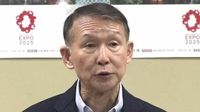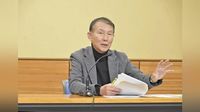Wakayama Prefecture Governor Shuhei Kishimoto, aged 68, passed away on April 15, 2025, due to septic shock, a severe condition that arises from an overwhelming immune response to infection. His death marks a significant loss for the region, as he was known for his dedicated service and numerous contributions during his tenure.
Kishimoto was discovered collapsed at his official residence in Wakayama City on the morning of April 14, 2025. His secretary and driver found him unconscious after they were unable to reach him. He was promptly transported to a local hospital, where he received treatment in the intensive care unit (ICU). Despite medical efforts, he succumbed to his condition at 9:33 AM the following day.
The governor had attended the opening event of the Osaka-Kansai Expo on April 13, where he participated actively, even carrying a portable shrine (mikoshi), showcasing his commitment to public duties. However, reports indicate that he had been feeling fatigued and had canceled a scheduled event due to back pain just prior to the Expo.
In a press conference following Kishimoto's death, Vice Governor Izumi Miyazaki expressed profound sorrow, stating, "He was truly a passionate and dedicated governor. His contributions to Wakayama in just about two and a half years were immense." Miyazaki highlighted Kishimoto's focus on supporting vulnerable populations, including initiatives like the free school lunch program for children and the expansion of community dining facilities from 46 to 105 locations.
Kishimoto's political career was notable; he was born in Wakayama City and graduated from the Faculty of Law at the University of Tokyo. He began his career in the former Ministry of Finance and was first elected to the House of Representatives in 2009, representing Wakayama District 1. After serving five consecutive terms, he resigned in 2022 to pursue the governorship, winning the election with the backing of several major political parties, including the Liberal Democratic Party and the Constitutional Democratic Party.
His sudden passing has triggered a series of procedural responses under the Public Offices Election Act. The law mandates that the prefectural election board must be notified of the governor's death within five days, and a gubernatorial election must be held within 50 days following that notification. Until a new governor is elected, Vice Governor Miyazaki will serve as acting governor.
Septic shock, the cause of Kishimoto's death, is a critical condition characterized by a dramatic drop in blood pressure and organ failure due to severe sepsis. It is often triggered by infections from bacteria or viruses, leading to a systemic inflammatory response that can rapidly escalate. Medical experts emphasize the importance of early detection and treatment to mitigate the risks associated with this condition. According to the World Health Organization (WHO), sepsis is recognized as a major health challenge, affecting an estimated 30 million people globally each year, with a mortality rate of approximately one in three.
Kishimoto's death is not only a personal tragedy for his family and friends but also a significant loss for the Wakayama community, which he served with dedication and compassion. His legacy includes a commitment to improving the lives of residents through various social initiatives and community support programs.
As the region mourns the loss of its governor, the focus will now shift to the upcoming election to fill the vacancy left by Kishimoto. The political landscape in Wakayama is poised for change as candidates prepare to step forward and continue the work Kishimoto championed during his time in office.
In the wake of this tragedy, the community reflects on Kishimoto's achievements and the impact he had on the lives of many. His vision for a more inclusive and supportive Wakayama will likely resonate in the policies of future leaders, ensuring that his contributions are not forgotten.





